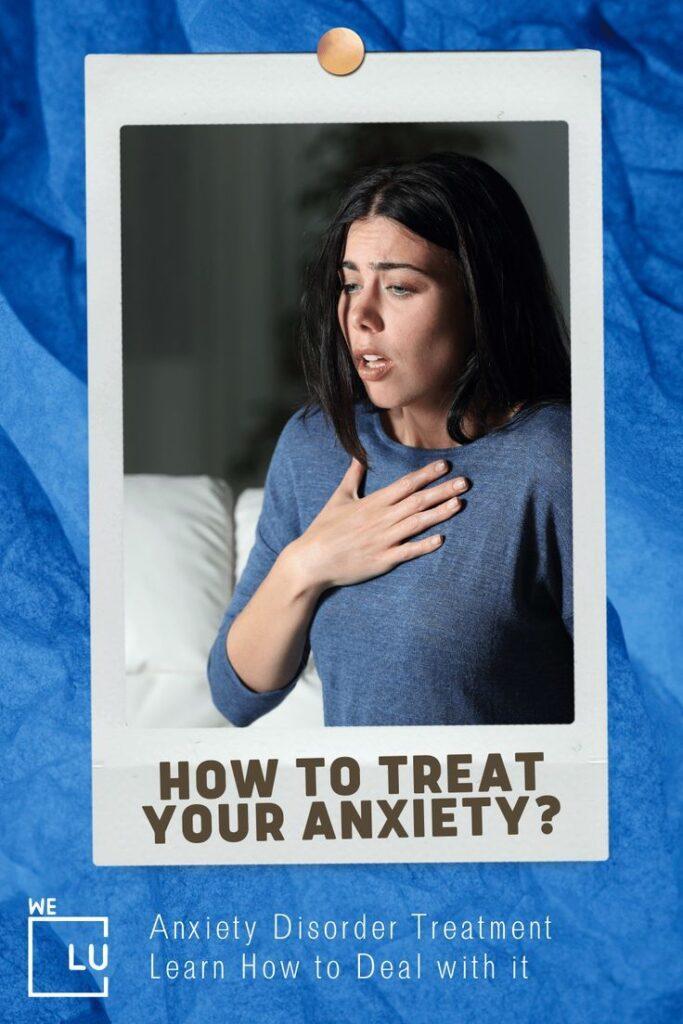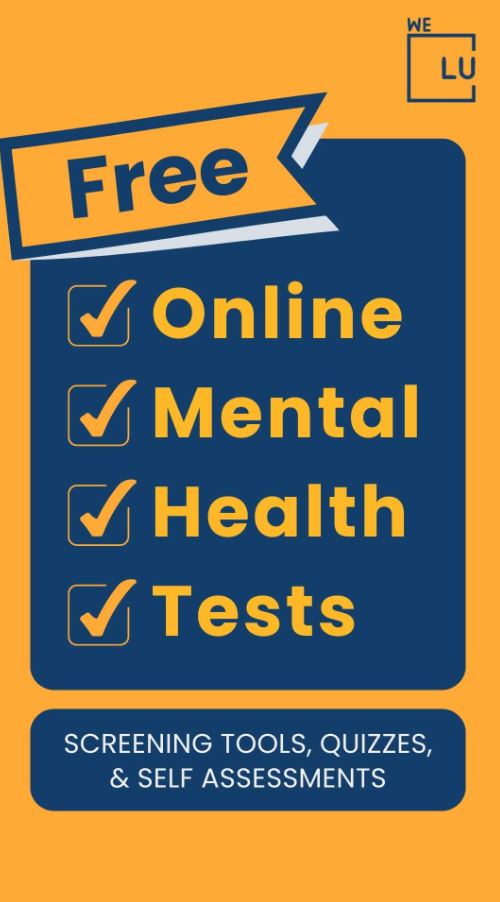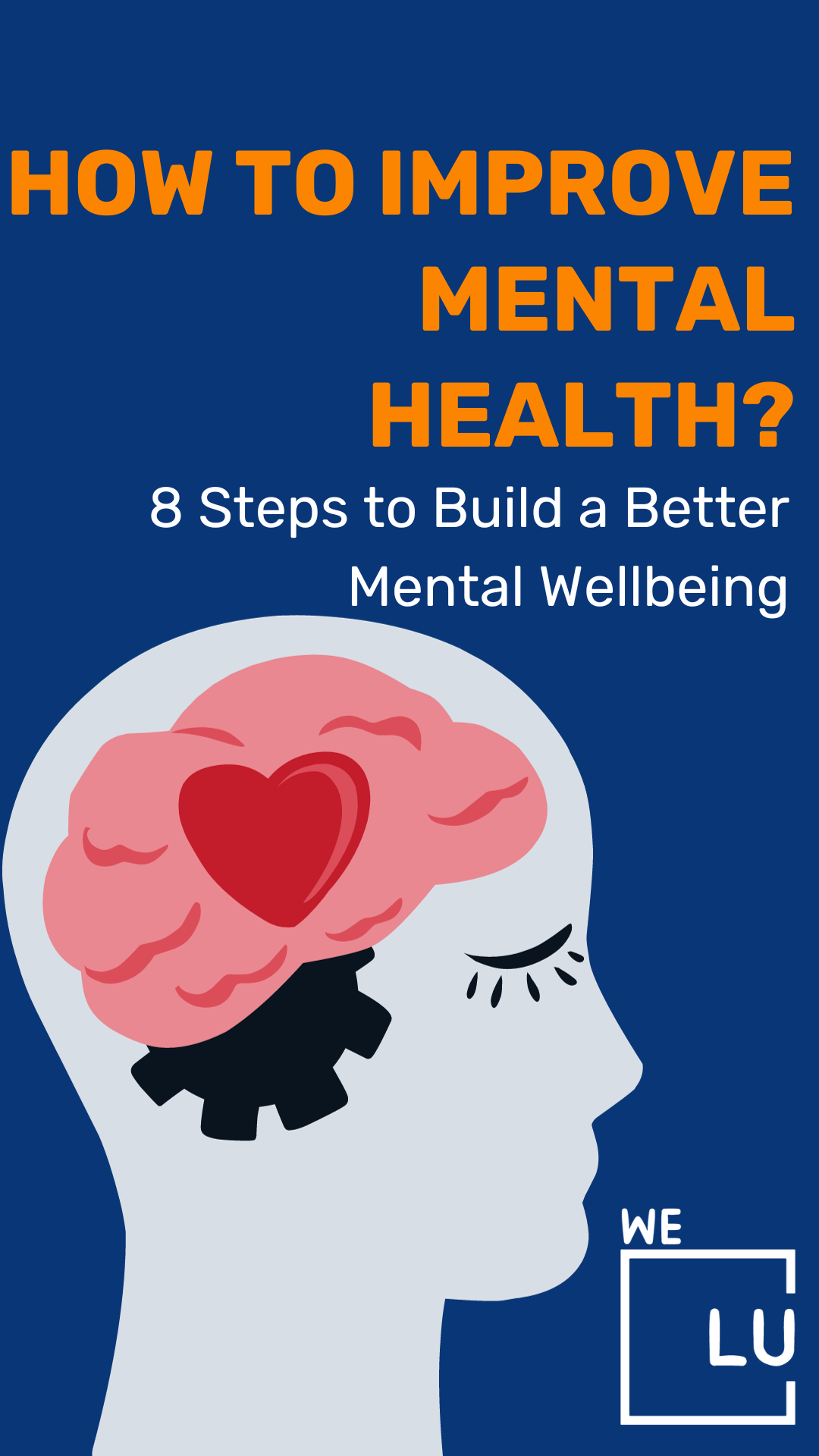Beck Anxiety Inventory
Please take the following quiz to assess if you are experiencing signs and symptoms of anxiety. Ensure you answer the questions honestly and thoroughly, reflecting your current emotional state rather than how you aspire to feel. It is important to remember that seeking help is always an option, regardless of the time that has passed. Let’s begin with the “Beck Anxiety Inventory Assessment” from We Level Up’s treatment center network. Anxiety is an emotion characterized by fear, apprehension, and discomfort, often accompanied by symptoms such as sweating, restlessness, tension, and a heightened heartbeat. It is a typical stress response. Some common behavioral symptoms of anxiety include:
- Experiencing irritability, tension, or restlessness.
- Experiencing heart palpitations.
- Insomnia.
Please complete the free Beck Anxiety Inventory Assessment to gain insights into your circumstances. This concise Beck Anxiety Inventory Assessment aims to identify behavioral patterns that may indicate a tendency toward having anxiety. While it can provide valuable information, it is essential to note that it is not intended as a comprehensive diagnosis or for diagnosing a specific type of anxiety. Depending on your responses, you may receive a potential indication of anxiety. If so, we are here and prepared to offer assistance. However, consulting with a healthcare professional for a clinical diagnosis is crucial. Please feel free to contact us 24/7 with any questions, and rest assured that no obligations are involved.
Take Our Free Beck’s Anxiety Inventory Assessment
Take Our Beck Anxiety Inventory BAI Online Confidential Results
The Beck Anxiety Inventory (BAI) is a self-report questionnaire designed to assess the severity of anxiety symptoms in adults and adolescents. It was developed by Aaron T. Beck and his colleagues. The BAI consists of 21 multiple-choice questions, each describing a common symptom of anxiety. Respondents are asked to rate how much they have been bothered by each symptom over the past week, including today.
*By taking this free quiz, you may obtain your results online and in your email box. You’ll have the opportunity to opt-in to learn more about your symptoms, talk to a mental health consultant and join our newsletter. Rest assured your information is private and confidential. Results, consultations and assessment are provided without any cost to you and without any obligation. If you do not wish to provide your contact information, you may omit it during your quiz. Thank you for opting in and participating. To you best of health.
Beck Anxiety Inventory Scoring Range

The Beck Anxiety Inventory Score Interpretation serves as a valuable tool for assessing the severity of anxiety symptoms. Within this framework:
- A score of 0-7 suggests minimal anxiety, indicating that the individual is likely experiencing only occasional and mild symptoms.
- Scores in the range of 8-15 points to mild anxiety, implying a somewhat increased level of distress, though it may still be manageable.
- Falling between 16-25, a score indicates moderate anxiety. Individuals in this range may grapple with more pronounced symptoms, potentially impacting daily functioning.
- Scores ranging from 26-63 are indicative of severe anxiety. In this range, individuals may be experiencing significant challenges due to heightened anxiety levels, affecting various aspects of their lives.
Understanding these scoring categories provides a quantitative perspective on anxiety severity, helping professionals and individuals tailor appropriate interventions and support. It’s crucial to interpret scores in the context of an individual’s overall mental health and seek guidance from qualified healthcare professionals for a comprehensive assessment and personalized treatment plan.
Beck Anxiety Inventory Age Range
The Beck Anxiety Inventory (BAI) is generally suitable for individuals aged 17 and older. It is designed for adults and not specifically tailored for children or adolescents. The assessment relies on a self-report format where individuals respond to a series of questions about their anxiety symptoms.
For assessing anxiety in children and adolescents, other age-appropriate tools may be more suitable. It’s important to use developmentally appropriate assessments that have been validated for the specific age group in question.
Always consult a qualified mental health professional when considering or administering psychological assessments to ensure the appropriateness and accuracy of the tools used for a specific age range.
Once you have finished answering the Beck Anxiety Inventory Assessment, please submit your responses and wait for the results. Sharing your test results with a professional healthcare counselor or mental health expert is advisable. If you require assistance, feel free to contact the We Level Up treatment center advocates for a complimentary evaluation and consultation regarding anxiety. Rest assured, no obligations are involved, and your call will remain confidential and free of charge.
Get Help. Get Better. Get Your Life Back.
Searching for Accredited Drug and Alcohol Rehab Centers Near You?
Even if you have failed previously and relapsed, or are in the middle of a difficult crisis, we stand ready to support you. Our trusted behavioral health specialists will not give up on you. When you feel ready or just want someone to speak to about therapy alternatives to change your life call us. Even if we cannot assist you, we will lead you to wherever you can get support. There is no obligation. Call our hotline today.
(844) 597-1011What Is The Beck Anxiety Inventory Assessment?
The Beck Anxiety Inventory (BAI) is a self-report questionnaire designed to assess the severity of anxiety symptoms in adults and adolescents aged 17 and older. Developed by psychologist Aaron T. Beck and his colleagues, the BAI is widely used by mental health professionals to measure the intensity of anxiety symptoms experienced by individuals.
The assessment consists of 21 multiple-choice questions, each describing a common symptom of anxiety. Respondents rate how much they have been bothered by each symptom over the past week, including feelings such as nervousness, fear of losing control, and a variety of physical symptoms associated with anxiety.
The total score on the Beck Anxiety Inventory categorizes individuals into different levels of anxiety severity, ranging from minimal to severe. It’s important to note that while the BAI provides valuable insights into anxiety symptoms, a comprehensive diagnosis and treatment plan should involve a thorough assessment by a qualified mental health professional.
The Beck Anxiety Inventory is a helpful tool in clinical settings, aiding in the evaluation of anxiety levels, tracking changes over time, and guiding treatment decisions.
The Symptoms Of Anxiety
Anxiety can manifest in a variety of symptoms, which can be both emotional and physical. It’s important to note that everyone experiences anxiety differently, and the severity and combination of symptoms can vary. Common symptoms of anxiety include:
Emotional Symptoms:
- Excessive Worry: Persistent and uncontrollable worry about various aspects of life, often involving anticipation of future events.
- Restlessness: Feeling on edge, agitated, or restless.
- Irritability: Easily becoming annoyed or frustrated.
- Difficulty Concentrating: Finding it challenging to focus or maintain attention.
- Fear of the Worst: Expecting the worst possible outcome, even in low-risk situations.
Physical Symptoms:
- Muscle Tension: Feeling tense and experiencing muscle aches or soreness.
- Fatigue: Feeling tired, even after adequate rest.
- Insomnia: Difficulty falling asleep, staying asleep, or having restless sleep.
- Sweating: Experiencing increased perspiration, especially in stressful situations.
- Trembling or Shaking: Physical manifestations of anxiety can include trembling hands or a shaky feeling.
- Increased Heart Rate: Palpitations or a faster-than-normal heart rate.
- Shortness of Breath: Feeling breathless or having difficulty breathing.
- Upset Stomach: Nausea, stomach discomfort, or digestive issues.
Cognitive Symptoms:
- Overthinking: Engaging in repetitive and negative thought patterns.
- Catastrophizing: Imagining the worst-case scenarios.
- Memory Problems: Difficulty recalling information or making decisions.
Behavioral Symptoms:
- Avoidance: Steering precise situations that trigger anxiety.
- Compulsive Behaviors: Engaging in repetitive actions to alleviate anxiety.
- Nervous Habits: Nail biting, pacing, or other physical behaviors to cope with stress.
Skip To:
Learn More:
- Free Hamilton Anxiety Scale Test (HAM-A)
- Atypical Antidepressants for Depression and Anxiety. Natural Antidepressants Supplements.
- 7 Signs of High Functioning Anxiety, Symptoms & Causes. High Functioning Anxiety Treatment.
- Lexapro vs Zoloft for Anxiety, Which is Better For You? Lexapro vs Zoloft Weight Gain. Switching From Zoloft to Lexapro.
- Do I Have Anxiety Quiz? Quick Quiz About Anxiety
- Over The Counter Medicine For Anxiety And Depression
- What is EMDR Therapy? EMDR Process, Dangers & Effectiveness. EMDR for PTSD, Anxiety, OCD, trauma, Addiction, Depression, ADHD & BPD. Discover We Level Up EMDR Therapy Near Me?
- Top Effective Anxiety Treatment. Anxiety Therapy and Medications. Types, Causes, Symptoms, and Anxiety Disorder Treatments.
- What is Biofeedback Therapy? Biofeedback Therapy for Anxiety & Biofeedback Therapy Near Me
- Ketamine For Anxiety Guide. Therapy With Ketamines For Anxiety. Research About Ketamine Therapy For Anxiety. Ketamine Treatment For Anxiety & How Fast Does Ketamine Work For Anxiety?
It’s essential to recognize that occasional anxiety is a normal part of life, but when these symptoms become persistent, excessive, or interfere with daily functioning, seeking support from a mental health professional is advisable. Anxiety disorders are treatable, and various therapeutic approaches and interventions can help individuals manage and overcome these challenges.
Beck Anxiety Inventory PDF
Anxiety Treatment Options

The treatment of anxiety can involve a combination of therapeutic approaches, lifestyle changes, and, in some cases, medication. The most effective treatment plan often depends on the severity of the anxiety and individual preferences. Here are some standard anxiety treatment options:
- Psychotherapy (Counseling):
- Cognitive-behavioral therapy (CBT): Focuses on identifying and changing negative thought patterns and behaviors that contribute to anxiety.
- Exposure Therapy: Gradual and controlled exposure to anxiety-provoking situations to reduce fear and avoidance.
- Mindfulness-Based Therapies: Techniques that promote present-moment awareness, such as Mindfulness-Based Stress Reduction (MBSR).
- Medication:
- Antidepressants: Selective serotonin reuptake inhibitors (SSRIs) and serotonin-norepinephrine reuptake inhibitors (SNRIs) are commonly prescribed for anxiety disorders.
- Benzodiazepines: Short-term use to relieve acute symptoms, but they are generally not recommended for long-term use due to the risk of dependence.
- Lifestyle Changes:
- Regular Exercise: Physical activity can reduce anxiety symptoms and improve mood by releasing endorphins.
- Healthy Diet: Nutrient-rich foods can positively impact mood and energy levels.
- Adequate Sleep: Establishing a regular sleep routine is crucial for managing anxiety.
- Relaxation Techniques:
- Deep Breathing Exercises: Diaphragmatic breathing can help activate the body’s relaxation response.
- Progressive Muscle Relaxation (PMR): Systematic tensing and relaxing muscle groups to reduce physical tension.
- Guided Imagery and Visualization: Using mental imagery to promote relaxation and calmness.
- Support Groups:
- Connecting with others who experience similar challenges can provide understanding, validation, and coping strategies.
- Mind-Body Interventions:
- Yoga and Tai Chi: Combining physical postures with breath control for relaxation and stress reduction.
- Biofeedback: Learning to control physiological responses using feedback from electronic monitoring.
- Self-Help Resources:
- Books, Apps, and Online Resources: Educational materials and tools to help individuals manage anxiety.
- Cognitive-Behavioral Therapy (CBT):
- CBT is a widely used therapeutic approach for anxiety disorders. It helps individuals identify and modify negative thought patterns and teaches practical skills to manage anxiety in real-life situations. By challenging irrational beliefs and replacing them with more balanced thoughts, CBT empowers individuals to navigate anxious feelings more effectively.
- Exposure Therapy:
- This therapeutic approach involves gradually exposing individuals to feared objects or situations in a controlled and supportive environment. The goal is to desensitize the person to anxiety-provoking stimuli, helping them develop healthier responses and reduce avoidance behaviors.
- Acceptance and Commitment Therapy (ACT):
- ACT encourages individuals to accept their thoughts and feeli ngs rather than fighting against them. It emphasizes mindfulness and values-based actions, helping individuals live in a way that aligns with their values, even in anxiety.
- Medication Management:
- While medication is not always the first choice, it can be beneficial for managing anxiety symptoms, particularly in more severe cases. Antidepressants, such as selective serotonin reuptake inhibitors (SSRIs) and benzodiazepines, are commonly prescribed. However, medication should be carefully monitored, and potential side effects discussed with a healthcare professional.
- Teletherapy (Online Therapy):
- With the advent of technology, teletherapy has become increasingly popular. Online platforms offer convenient access to mental health professionals, allowing individuals to receive therapy from the comfort of their own homes.
It’s important to note that treatment should be individualized, and consulting with a mental health professional is crucial for a comprehensive assessment and personalized plan. The combination of therapy and lifestyle changes is often effective in managing anxiety disorders, and medication may be considered based on the severity of symptoms and individual needs.
It’s essential to recognize that treatment plans may need adjustments over time, and ongoing communication with mental health professionals is key. The most effective approach often involves a combination of therapies tailored to the individual’s specific needs and preferences. Seeking support early and actively participating in the treatment process can contribute to long-term anxiety management.
Anxiety Facts
Anxiety Overview
Your brain and behavior are both impacted by the condition of addiction. Substance addiction makes it unable to resist the impulse to use the drug, regardless of how harmful it may be. The sooner you receive treatment for drug addiction, the better your chances are of avoiding some of the disease’s more severe side effects.
Anxiety Symptoms
Behavioral: hypervigilance, irritability, or restlessness.
Cognitive: lack of concentration, racing thoughts, or unwanted thoughts.
Whole body: fatigue or sweating.
Also common: anxiety, excessive worry, angor animi, fear, insomnia, nausea, palpitations, or trembling.
Anxiety Treatment
- Support group: A place where those pursuing the same disease or objective, such as weight loss or depression, can receive counseling and exchange experiences.
- Cognitive behavioral therapy: A conversation treatment that aims to change the negative attitudes, actions, and feelings connected to psychiatric discomfort.
- Counseling psychology: A subfield of psychology that handles issues with the self that are connected to work, school, family, and social life.
- Anger management: To reduce destructive emotional outbursts, practice mindfulness, coping skills, and trigger avoidance.
- Psychoeducation: Mental health education that also helps individuals feel supported, validated, and empowered
- Family therapy: psychological counseling that improves family communication and conflict resolution.
Anxiety Statistics
Anxiety is a common mental health condition characterized by excessive worry, fear, and apprehension. It can manifest in various forms, such as generalized anxiety disorder (GAD), panic disorder, social anxiety disorder, and specific phobias. Anxiety can significantly impact a person’s daily life, relationships, and well-being.
264 million
Anxiety disorders are among the most common mental health conditions worldwide, affecting a significant portion of the population. An estimated 264 million people globally were living with anxiety disorders in 2017.
Source: WHO
50%
Anxiety and depression often coexist. It is reported that approximately 50% of individuals diagnosed with an anxiety disorder are also diagnosed with depression at some point in their lives.
Source: ADAA
$42 billion
The economic costs associated with anxiety disorders are substantial. Anxiety disorders cost more than $42 billion annually in healthcare expenses and lost productivity in the United States.
Source: Journal of Clinical Psychiatry
How to Improve Mental Health? 8 Steps & Tips for Maintaining Your Mental Wellbeing
Video Script
8 Steps for Mental Wellbeing & How To Improve Mental Health In The Workplace
- Staying Positive.
- Practicing Gratitude.
- Taking Care of Your Physical Health.
- Connecting With Others.
- Developing a Sense of Meaning and Purpose in Life.
- Developing Coping Skills.
- Meditation.
- Relaxation Techniques.
Search We Level Up Beck Anxiety Inventory & Recovery Resources
Sources
[1] Chand SP, Marwaha R. Anxiety. [Updated 2023 Apr 24]. In: StatPearls [Internet]. Treasure Island (FL): StatPearls Publishing; 2023 Jan-. Available from: https://www.ncbi.nlm.nih.gov/books/NBK470361/
[2] Bandelow B, Michaelis S, Wedekind D. Treatment of anxiety disorders. Dialogues Clin Neurosci. 2017 Jun;19(2):93-107. Doi 10.31887/DCNS.2017.19.2/bbandelow. PMID: 28867934; PMCID: PMC5573566.
[3] Anxiety Disorders – National Institute of Mental Health (NIMH)
[4] Anxiety Disorders – Substance Abuse and Mental Health Services Administration (SAMHSA)
[5] Prevention and Treatment of Anxiety, Depression, and Suicidal Thoughts and Behaviors Among College Students – Substance Abuse and Mental Health Services Administration (SAMHSA)
[6] Mental Health Conditions: Depression and Anxiety – Centers for Disease Control and Prevention (CDC)
[7] Anxiety Disorders: Types, Causes, Symptoms & Treatments – MedlinePlus (.gov)
[8] Mental Health and Mental Disorders – Healthy People 2030 https://health.gov/healthypeople/objectives-and-data/browse-objectives/mental-health-and-mental-disorders
[9] Munir S, Takov V. Generalized Anxiety Disorder. [Updated 2022 Oct 17]. In: StatPearls [Internet]. Treasure Island (FL): StatPearls Publishing; 2023 Jan-. Available from: https://www.ncbi.nlm.nih.gov/books/NBK441870/
[10] Any Anxiety Disorder – NIMH – National Institutes of Health (NIH)

